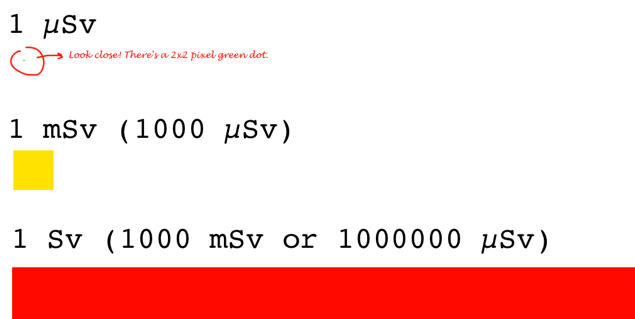TEPCO, operator of the Fukushima Daiichi, says they are trying to lay new electric power lines to the plant. This is an attempt to restore power to the plant, to help fight the disaster. All earlier attempts to restore power failed.
TEPCO, operator of the Fukushima Daiichi, says they are trying to lay new electric power lines to the plant. This is an attempt to restore power to the plant, to help fight the disaster. All earlier attempts to restore power failed.
Robert Alvarez, senior scholar at the Institute for Policy Studies, says the situation is so bad that “This is a situation where people may be called in to sacrifice their lives. … It’s very difficult for me to contemplate that but it’s, it may have reached that point.”
The U.S. military has banned service members from coming within 50 miles (80km, that’s much larger area than Japan’s 20-30km) of the Fukushima Daiichi plant. The U.S. Embassy, in Japan, is tell all U.S. citizens who live near the plant to stay indoors.
White House spokesman Jay Carney said “…the advice the Japanese government is giving…is different than the advice we’d be giving if this incident happened in the United States.”
After watching interviews of tsunami survivors it has become clear that there was very little time between the 9.0 quake and the first tsunami surge.
Most survivors say there was less than 15 minutes from the time of the quake to the tsunami impact. An environmental activist from the United States, Brian Barnes, says where he was it was less than 7 minutes. He says most of the people of Otsuchi, where he was, died. The city is wiped out. Barnes survived because he immediately drove to higher ground after the quake, with the tsunami showing up after he got to the top of the hill.
Most survivors say any emergency preparedness training they underwent in the past, did not prepare them for this.
The Japanese government is turning to hotels to house evacuees from the ongoing nuclear disaster.
People living within 20km of the Fukushima Daiichi plant were ordered to evacuate. Many people discovered that the shelters they were supposed to report to were already full of quake/tsunami survivors.
A Japanese doctor, who specializes in radiation sickness, says microsievert is OK (in general). Millisievert is bad, because it is 1,000 times more than microsievert.

Japanese officials have given radiation levels in both sieverts, sometimes correcting each other during the press conferences. This is causing confusion, and adding to people’s mistrust of officials.
One official reading was in 400 millisievert, which is 400,000 microsievert. Apparently the 400 millisievert report is correct. However, some people thought they meant 400 microsievert, which would have been a much safer reading.
The way officials are scrambling to keep the reactors, and spent fuel rods, from melting down, indicates that radiation readings, from around the plant, are probably in the millisievert range. One report said that readings around the plant are 1.4 millisievert per hour (that’s 1,400 microsievert).
Dr Thomas Neff, at the Massachusetts Institute of Technology, said “This is a slow-moving nightmare.”
Fukushima Daiichi reactors 3 & 4 are priorities. Reactor 4 has a large amount of spent fuel rods on fire. Reactor 3 is the only reactor at the plant that uses plutonium. Plutonium is the most deadly of the fuels used.
The massive amount of spent fuel rods overheating, and on fire, can lead to a massive melt down.
Fukushima Daiichi plant has six reactors. Three have exploded. Three are overheating. 1,000+ spent fuel rods overheating or on fire.
Guenther Oettinger, European Union’s energy chief, said the Fukushima Daiichi plant was “…effectively out of control”.
Japanese fire trucks, police water cannon trucks, as well as water trucks from the U.S. military, are heading towards the pant. This is because the helicopter water drops stopped due to high radiation levels. Official radiation reports for the civilian population have continued to contradict radiation level statements by those actually fighting the nuclear disaster.
The Japanese government is pleading with private companies to help supply people evacuated from around the Fukushima nuclear plant, with food, water and other supplies.
This is a clear indicator that the Japanese government is not prepared for such an emergency, despite the international perception of Japan’s high level of disaster readiness.
TEPCO (Tokyo Electric Power Company) is asking the JSDF to make another try at dropping water on the Fukushima Daiichi plant.
The Japanese Self Defense Forces stopped after radiation levels, above the plant, got too high.
Plant workers are trying to prevent a massive melt down of fuel rods (1,000+), which have overheated and caught fire.
There are more than 1,000 spent fuel rods at Fukushima Daiichi plant. So far attempts to cool the rods down with water is failing.
To show how hard it is to cool down spent fuel rods: It takes 3 to 4 years under normal conditions.
The large amount of spent fuel rods, at the plant, means a massive melt down could occur if temperatures can not be brought down. As one U.S. nuclear engineer said, even a fuel rod fire would be like “…Chernobyl on steroids.”
No wonder many countries are telling their people to get out of Japan.